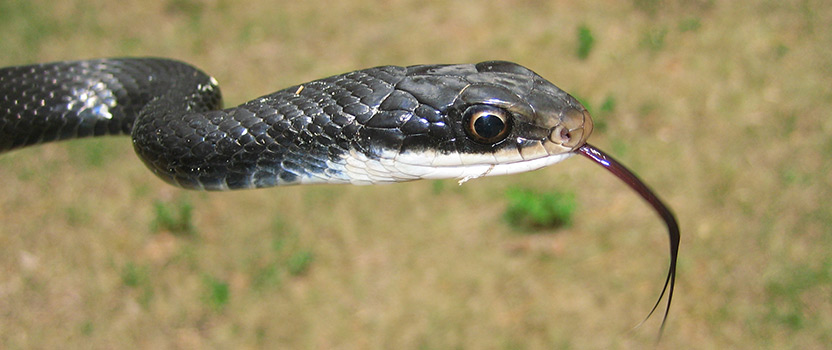As with any other animal, snakes will rely on their senses in order to be aware of what is going around them, but the structure of the sense organs are not the same, and in some cases they are totally unique.

Even though snakes have a large nose that they can use to smell, their Jacobson’s organ is the one with the ability of taste-scent of the environment. It offers useful information on the surroundings. The organ has two activities that lay side by side on the roof of the mouth of the snake. The animal will flicker the forked tongue out, but on its own it has no true sense of its taste. It will collect the chemical particles in the air and it will transfer them to a sensitive lining at the Jacobson’s organs while it is being drawn back in the mouth. This is how the snake is able to taste-scent the area that surrounds it. It can locate and track a prey or find a mate and avoid the predators.
Since snakes spend more time in the ground, their sight is not that important and their eyes have degenerated. Snakes are short-sighted and their retina has a unique kind of light sensitive cell in the double cone. As living underground has reduced the need to have good eyesight, it also removes the importance of hearing the airborne sounds, and this is why snakes have lost their eardrum with the middle ear structure. This makes the snake deaf. However, the snake can be sensitive to the vibrations on the ground like when footsteps approach where it is. This will be transmitted in the inner ear within the bones of the skull. The inner ear will also help the snake to maintain the balance.
Snakes also have a range of other sense organs and most of them are familiar to people. The bodies have pressure receptors and the skin is sensitive to the touch and it can detect the heat, which is an advantage taking into account that it is cold-blooded and it needs to warm itself. There are some sense organs that are not found in other animals. One example is the colubrid snakes that possess specialized organs on the vents and on the lower jaws, and this plays a role in their courtship and in mate selection. The pit vipers and rattlesnake have developed infra-red sensors and they enable them making sense of their body heat and that of their warm-blooded prey. Such night sights are accurate and they let the snake judge the distance of their prey and to hunt the rodents successfully when they are in total darkness or underground. The snakes have everything needed to explore their surroundings while some of the sense organs are different from those of humans.
For more information about how do snakes smell their environment, go to my Snake Removal - How to Get Rid of Snakes home page.